Exhibition paints Rembrandt as 'modern' artist
- Published
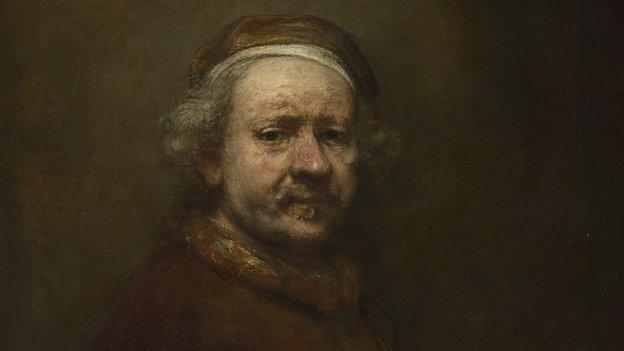
Self Portrait at the Age of 63 (1669)
An exhibition of the late works of Rembrandt opens at London's National Gallery this week, on the first step in a journey that will take many of the works back to Amsterdam, the city where they were created in the 17th Century.
The story goes that upon viewing Rembrandt's Jewish Bride for the first time in 1885, Vincent Van Gogh said: "I should be happy to give 10 years of my life if I could go on sitting here in front of this picture for a fortnight, with only a crust of dry bread for food."
In a letter to his brother Theo, he wrote: "What an intimate, what an infinitely sympathetic painting."
The Jewish Bride, officially known as Portrait of a Couple as Isaac and Rebecca, dates from about 1665 and is one of the key paintings on show as part of Rembrandt: The Late Works at the National Gallery.
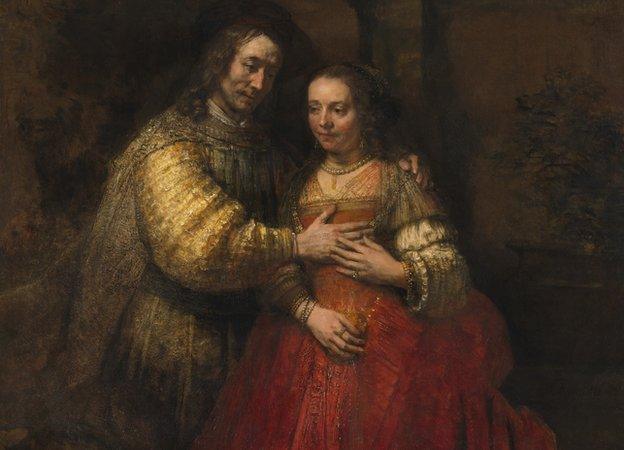
Portrait of a Couple as Isaac and Rebecca, known as The Jewish Bride, about 1665
Organised in collaboration with Amsterdam's Rijksmuseum, the exhibition is the first to explore Rembrandt's final years from about 1652 to his death in 1669.
It will then move to the Rijksmuseum's newly opened Philips exhibition wing in February 2015.
"Every work in the exhibition - including many works rarely seen in public - is by the artist himself, to allow the most accurate understanding of his style and technique," says Betsy Wieseman, the show's curator at the National Gallery (NG).
The NG and the Rijksmuseum have been in talks about the exhibition for some 10 years.
"I think that it is safe to say that the more important the artist, the longer it takes to put together an exhibition about them," says Ms Wieseman.
The exhibition features some 40 paintings, 20 drawings and 30 prints that are on loan from around the world.
"The biggest challenge has been to convince public institutions and private collectors to lend their paintings for this exhibition, but we have been very fortunate and are indeed very grateful for their help in gathering this extraordinary selection of Rembrandt's late works," says Ms Wieseman.
What do these later works tell us about the artist? "Visitors will be able to appreciate Rembrandt as a very 'modern' artist - he eliminated unnecessary details, he explored bold, almost abstract techniques, and he was obsessed with finding ways to intensify the viewer's experience of his works," says Ms Wieseman.
There is as much excitement in Amsterdam as there is in London about the exhibition.
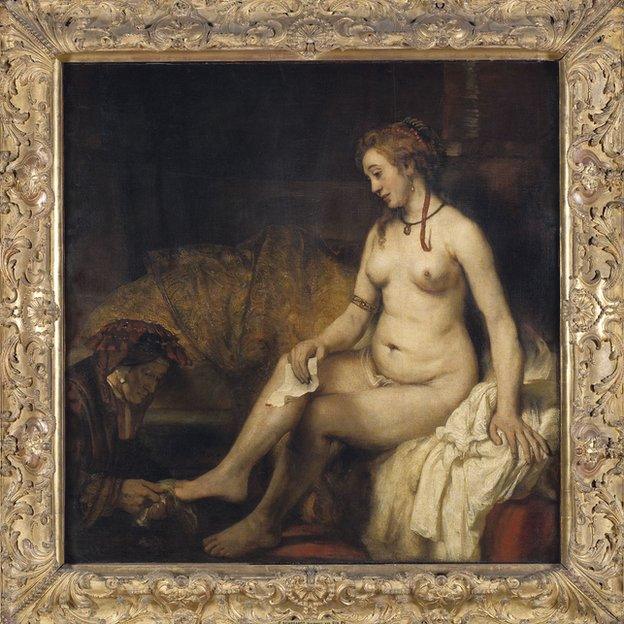
Bathsheba with King David's Letter, 1654
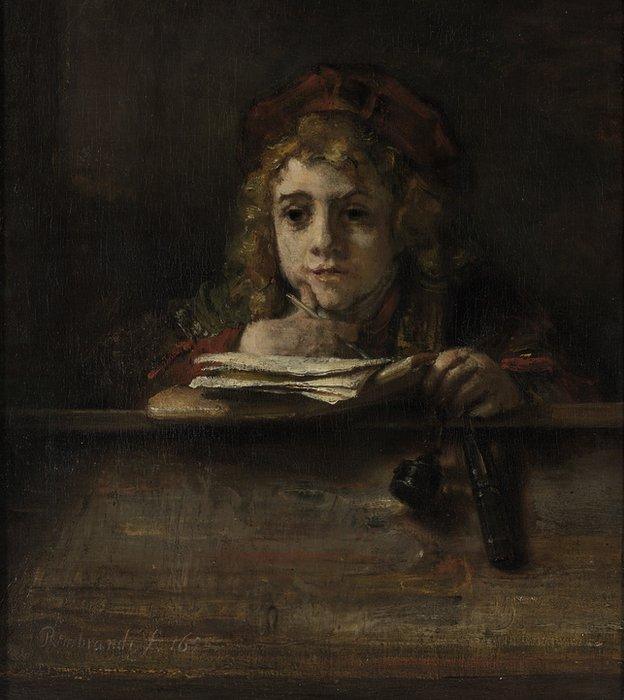
Titus at his Desk, 1655
"Everyone knows Rembrandt is the master of light," says Gregor Webern, head of fine arts at the Rijksmuseum. "He starts with light but he continues with light at the end of his career."
Among the themes of this period are self-portraiture - "he again and again paints himself," says Mr Webern - experimentation and the observation of everyday life.
"He does not paint Venus falling down from heaven, he is looking to the models of the neighbourhood, " Mr Webern says.
There will be some differences between the two exhibitions. The Rijksmuseum will have three paintings from German collections that aren't travelling to London, including the Self-Portrait as Zeuxis Laughing (from Cologne), painted six years before Rembrandt's death.
Mr Webern puts this down to the fragility of the works, while Ms Wieseman mentions the NG's smaller exhibition space.
The National Gallery announced only last week it had secured the loan of The Conspiracy of the Batavians under Claudius Civilis' (about 1661-2). It is the first time the painting has ever been to the UK.
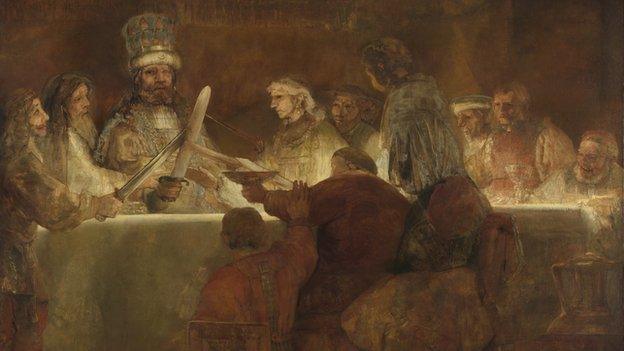
The Conspiracy of the Batavians under Claudius Civilis' (about 1661-2) is a late addition to the London show

The Sampling Officials of the Amsterdam Drapers’ Guild, known as The Syndics, 1662
Ms Wieseman says: "The raw savagery of the figures and the clandestine nature of their meeting are brilliantly expressed by means of Rembrandt's broad brushwork, and the odd and dazzling effects of the light cast by the lamp hidden by the figure in the immediate foreground."
The Conspiracy painting will hang alongside other key works such as:
The Sampling Officials of the Amsterdam Drapers' Guild (Rijksmuseum, Amsterdam), better known as The Syndics
An Old Woman Reading (The Buccleuch Collection, Scotland)
Bathseba with King David's Letter (Musee du Louvre, Paris)
Titus at his Desk (Museum Boijmans van Beuningen, Rotterdam)
Self Portrait with Two Circles (English Heritage, The Iveagh Bequest, Kenwood House)
Ms Wieseman says working on the exhibition has given her a much better understanding of how Rembrandt blurred the boundaries between drawing, painting and printmaking.
"I think it will be particularly fascinating to see the paintings, drawings and prints displayed together. I don't think Rembrandt saw them as three completely separate disciplines. Some of what he tried to achieve in printmaking must have been influenced by what he was able to do in painting: how could he achieve the same effects with an etching needle, monochrome paper and ink."
She hopes that people will come away with a better understanding of what Rembrandt was hoping to achieve in the final years of his career.
"You do have a sense of an artist who was very directed: whether consciously or unconsciously, he identified certain artistic or iconographic 'problems' that he wanted or needed to solve," she says.
"For example, rather than simply painting a picture of Bathsheba, Rembrandt wanted to understand and represent the emotions that she was feeling as she read the letter from her king, forcing her into committing adultery.
"And in looking at a painting or a print or a drawing, I would like visitors to think a little more deeply about how the image is created, and why Rembrandt made the artistic choices he did. I think if visitors can empathise with the emotional content of his works, and appreciate his incredible technique, Rembrandt would be very pleased.
"I think the emotional dimension of his work and his extraordinary technique and passion for his art is what still continues to touch people and astonish audiences."
Rembrandt: The Late Works is at the National Gallery 15 Oct 2014 - 18 Jan 2015 (admission charge). After London, the exhibition will travel to the Rijksmuseum in Amsterdam (12 February - 17 May 2015).
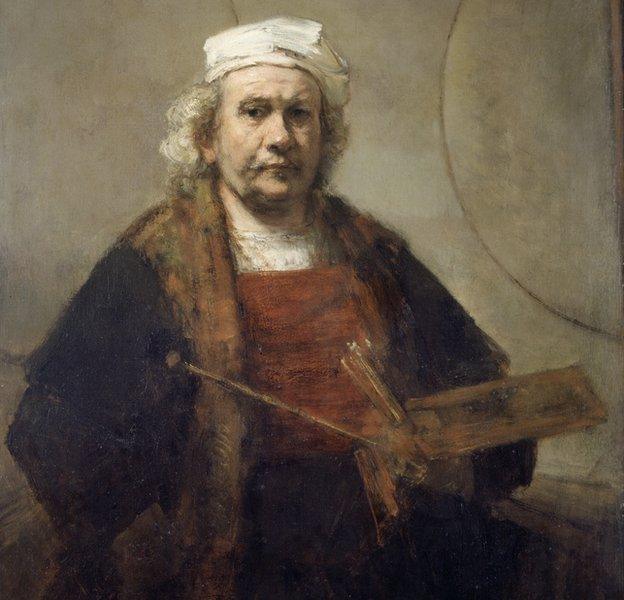
Self Portrait with Two Circles, about 1665-9